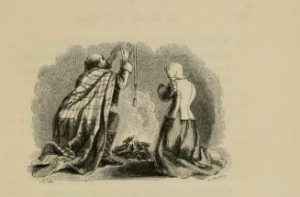nav
Hogmanay!

It is no secret that Scotland has gone all out on New Year for centuries, but where did this come from, what made it such a popular event and how can you celebrate?
A Brief History:
Many of the classic Hogmanay traditions were bought to Scotland by invading Vikings in the early 8th and 9th centuries. The Vikings, living even further north than the Scots, paid particular attention to Winter Solstice, which marked the shortest day in the calendar, and celebrated it with extreme gusto, which became the Hogmanay that is known and loved today.
Christmas was banned in Scotland for centuries and was only made a public holiday in Scotland in 1971. The National Records of Scotland have a great article on this subject here
Though some still secretly celebrated Christmas, Hogmanay proved more popular with the masses, even to this day in certain parts of Scotland. New Years Eve, New Years Day and the 2nd of January are all declared public holidays in Scotland and the streets are set alight with music, fireworks and fun.

Hogmanay Traditions:
The First Footing:
One of the most popular Hogmanay traditions is the first footing. A dark haired man waits until just after midnight on New Years Eve with a piece of shortbread, Scottish black bun, coal, and a wee dram of whiskey, then knocks on the door and is let into the house, being the first foot, or first person, to enter the house for the year. This practice is considered to bring good luck to the house and ensure a happy new year.
The reason a dark haired man is preferred as a first footer dates back to the Viking era, when a blonde Norseman showing up at your door was definitely not a sign of good luck. If there were no dark haired men in the immediate family, a neighbour, cousin or clansman would be invited.

A Ceilidh:
A Ceilidh is just like a ball, but often spontaneous, less formal and done in the true Scottish spirit with fiddle, bagpipe and song. Couples would dance together or in groups and men would dance over their swords or dance the Highland Fling.

Feasting:
Scottish families would all get together for a feast and a party at New Year, often eating food they had prepared especially earlier in the year. Foods such as haggis, steak pie, neeps ‘n taties (turnips and potatoes), bannocks, cock-a-leekie soup, venison, shortbread, “tablet”, whiskey, black buns…luckily there are more healthier options available today!

Housecleaning:
It was believed that if you cleaned your house at Hogmanay, you invited a fresh start to the new year. Scots also tried to pay all the years debts and cleaned the ashes from the fire then lit it after the clock struck midnight.

The traditional method of washing clothes and items in a river/stream. Lots of women would have done this around Hogmanay to get their houses in order.
Auld lang Syne:
The most popular song to sing at New Year all over the world, Auld Lang Syne is commonly attributed to Robert Burns who published his version in 1788, claiming he heard the original verses from a Highland man he had met, then changed it slightly to his preference. It is now commonly agreed that the song was in circulation at least 80 years before Robert Burns had discovered it. Auld Lang Syne is traditionally sung before the bells ring at midnight on New Years Eve.
Other favourite Hogmanay songs include A Guid New Year to ane an’ a’, sung after midnight.

Fireworks:
A more modern invention inspired by the pagan Viking festivals, the cities and towns of Scotland are lit up with the best firework displays money can buy to celebrate the New Year, as well as giant bonfires and lantern parades.
Before the invention of fireworks Scots would dress in cattle hides and run around the village while being hit by sticks, and the smoke from animal pelts wrapped around sticks and set alight were apparently supposed to ward off evil spirits. The stick became known as a Hogmanay.
Many of these traditions are still enjoyed today, particularly in older communities like the Highlands and Hebrides.
In the Shetland Islands, New Year is still called Yules, harking back to the days of Scandinavian rule.

What can you do to celebrate?
On Hogmanay, presents are exchanged, dances are danced and all manner of eating and drinking ensues. Here are some ideas:
- Keep one or two presents back from Christmas to exchange through the family for Hogmanay
- Prepare or buy some favourite foods to serve at New Year, even if it is just for yourself.
- Play some Scottish music on your phone or stereo
- If you like, host your own ceilidh, even if it just for you and your family – put on some Scottish dance music (the Scottish Fiddle Orchestra is very good) and have a go, you don’t need to know every step!
- Wear some tartan
- Give your house a quick tidy and clean out your fireplace if you have one
- Light some sparklers or fireworks in your backyard (always make sure you adhere to your local fire regulations, follow safety precautions and check there are no fire restrictions in your area)
- Nominate a member of your family (or yourself) to be the first footer. Note: if it is cold where you live, do make sure you or they rug up warm!

Best wishes, and Happy Hogmanay,
